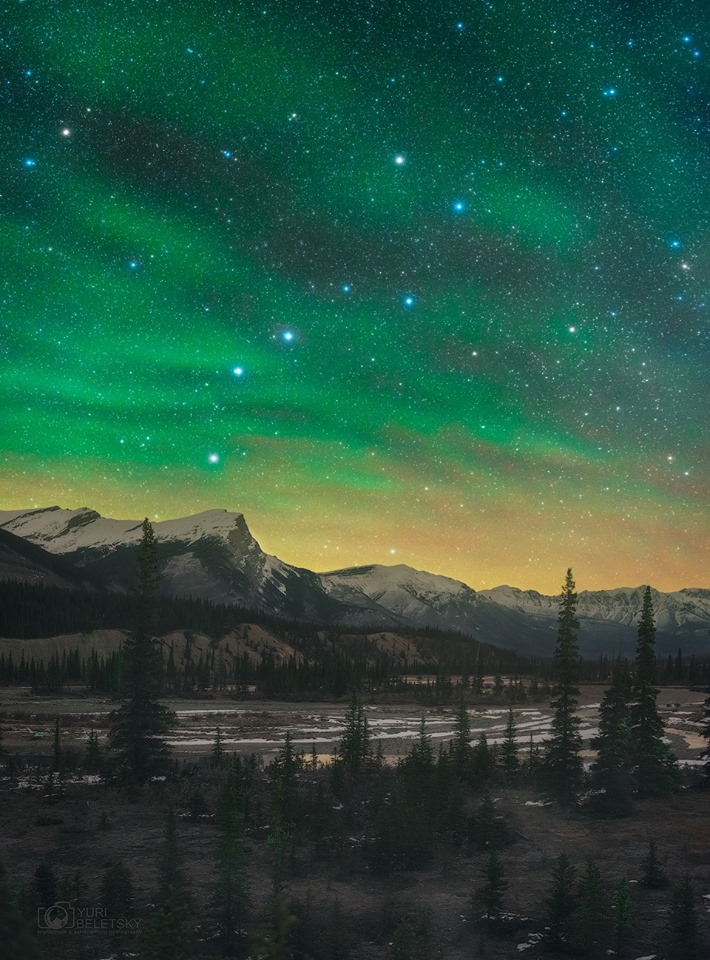
Tonight, look for the northern sky’s two most prominent sky patterns – the constellation Cassiopeia the Queen and the Big Dipper. Both circle around Polaris, the North Star, once a day. They are opposite each other, one on either side of the North Star.
At nightfall, the constellation Cassiopeia the Queen is easy to recognize in the northern sky, either in the evening or before dawn. This constellation is shaped like a W or M and contains five moderately bright stars. The distinctive shape of Cassiopeia makes her very noticeable among the stars of the northern sky.
Best New Year’s gift ever! EarthSky moon calendar for 2021. Only a few left!
And, of course, Ursa Major the Greater Bear – which contains the Big Dipper asterism – is one of the most famous of all star patterns. At nightfall this month, Cassiopeia shines high in the north while the Dipper lurks low. They are always on opposite sides of the North Star. From the southern half of the U.S., the Big Dipper is actually partially or totally beneath the horizon this month in the evening hours. North of about 40 degrees north latitude (the latitude of Denver, Colorado), the Big Dipper always stays above the horizon (if your horizon is level).

Image of the Big Dipper via Yuri Beletsky Nightscapes.
That’ll change as night passes, as the great carousel of stars wheels westward (counterclockwise) around Polaris, the North Star. Polaris resides halfway between Cassiopeia and the Big Dipper, so these two star formations are like riders on opposite sides of a Ferris wheel. Looking northward, they rotate counter-clockwise around Polaris – the star that marks the sky’s north celestial pole – once a day. Approximately every 12 hours, as Earth spins beneath the heavens, Cassiopeia and the Big Dipper trade places in the sky.

The Big Dipper and the W-shaped constellation Cassiopeia circle around Polaris, the North Star, in a period of 23 hours and 56 minutes. The Big Dipper is circumpolar at 41 degrees north latitude, and all latitudes farther north.
Thus, around midnight tonight, Cassiopeia circles directly west (left) of Polaris, whereas the Big Dipper sweeps to Polaris’ east (right). Before dawn tomorrow, the Big Dipper climbs right above the North Star, while Cassiopeia swings directly below.
Bottom line: Watch the celestial clock and its two great big hour hands – Cassiopeia and the Big Dipper – as they swing around the North Star every night!
Easily locate stars and constellations during any day and time with EarthSky’s Planisphere.
Donate: Your support means the world to us
Schedar: Cassiopeia’s brightest star
Source:
https://earthsky.org/tonight/cassiopeia-and-big-dipper